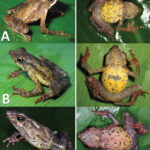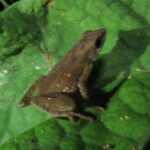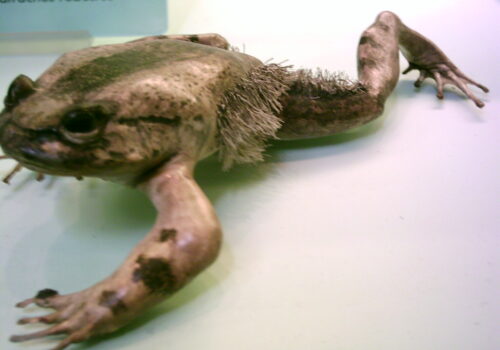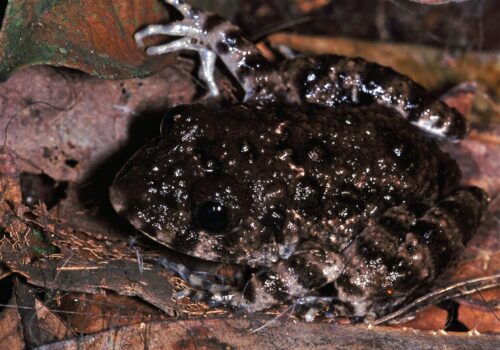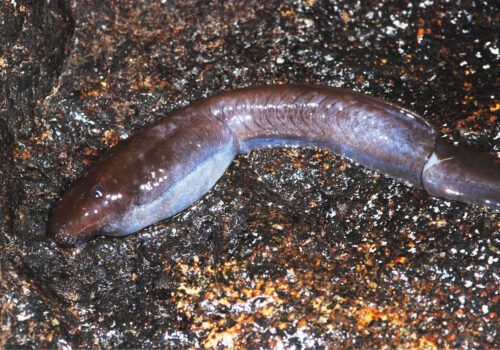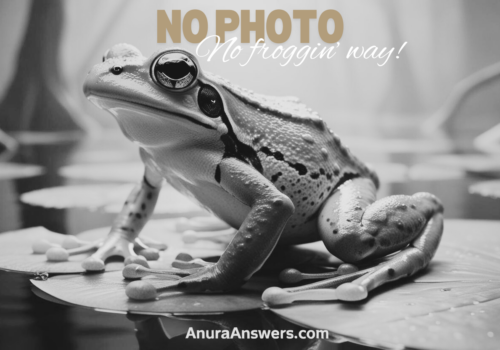Discovering the Secrets of an Elusive Amphibian: Leptodactylodon wildi#
Hidden deep within the dense, wet montane forests of Cameroon, an unassuming yet exceptionally intriguing frog persists, largely unnoticed by the wider world. Leptodactylodon wildi, known commonly as Wild’s egg frog, is a species whose very existence embodies the quiet, often overlooked intricacies and beauties of nature. Veiled beneath leaf litter, moss-covered rocks, and shaded forest streams, this shy amphibian speaks volumes about the delicate balance required to sustain biodiversity in increasingly threatened ecosystems.
Belonging to the family Arthroleptidae, Leptodactylodon wildi is not just another member of the amphibian chorus; it is a living testament to nature’s extraordinary adaptability and vulnerability. Discovered relatively recently—and indeed named in honor of Dr. Charles Wild, a pioneering naturalist—the species quickly captured researchers’ interests due to its unique reproductive behaviors and strikingly precise habitat requirements. Beyond mere curiosity, the story of L. wildi represents a poignant warning about habitat loss and reinforces the critical need for sustained conservation efforts.
Taxonomy and Classification#
Scientifically classified as Leptodactylodon wildi, this fascinating amphibian falls under the order Anura, the diverse group of frogs and toads. Belonging specifically to the family Arthroleptidae, known as the “squeaker frogs,” it shares lineage with other ground-dwelling and moisture-loving amphibians adapted exquisitely to humid forests in tropical central Africa.
The genus Leptodactylodon consists of several closely related, secretive species, each adapted carefully to specific microhabitats. Among its closest relatives are species like Leptodactylodon bicolor and Leptodactylodon perreti, frogs that, like L. wildi, occupy small, localized areas within the montane regions of Cameroon and adjacent territories, highlighting a common specialization in ecological niche use within the genus.
Natural Habitat#
Leptodactylodon wildi is known primarily from the mountainous regions in southwestern Cameroon—specifically the lush Cameroon Highlands, where the cool mist of low-hanging clouds meets dense forest ecosystems. This region is defined by steep slopes, deep valleys, and abundant rivers and streams that foster moist conditions ideal for the species’ life stages.
The Montane Forest Ecosystem#
Stepping into the realm of L. wildi feels akin to entering an enchanted sanctuary. Dense trees create a green cathedral of shadows, punctuated by bouts of gentle sunlight filtering down to the damp forest floor. Lichen-covered branches testify to the high moisture, while carpets of moss envelop fallen tree limbs and rocks. Streams fed by frequent rainfall cascade gently, forming an intricate network that is central to the survival of this amphibian.
This environment serves not just as a backdrop to the species’ silent drama but as a vital partner in its survival story. L. wildi depends steadfastly on small freshwater streams and pools beneath this dense canopy—habitats characterized by pristine, clear water where they find refuge, nourishment, and suitable breeding grounds.
Physical Characteristics#
Unassuming yet charming, Leptodactylodon wildi boasts subtle yet purposeful features that allow it seamless integration into its surrounding habitat. Adults are generally compact and modestly sized, averaging around 3–4 centimeters in length, making them easily overlooked amidst the rich tapestry of leaf litter and forest debris.
Coloration and Camouflage#
The frog’s coloration—a subtle harmony of earthy browns, greens, and grayish tones—renders it nearly invisible within its habitat. Its skin often exhibits an intricate patterning of darker blotches or spots that mimic the textures of its moss-and-rock environment. Such cryptic coloration protects it from predation and facilitates stealth hunting.
Interestingly, their relatively smooth yet slightly granular skin acts as a moisture-retaining barrier, helping them survive outside water bodies in the cool, humid conditions of the montane forest understory. The digits of this species are slight yet strong, facilitating efficient movement through leaf litter and along slippery, moss-covered stream banks.
Behavior and Life Cycle#
Diet and Foraging#
Stealthy and patient predators, these small amphibians primarily feast on delicate prey such as insects, spiders, small worms, and other arthropods abundant within their habitat. Employing an ambush strategy, they rely on camouflage to approach and swiftly capture moving prey. Their hunting behavior, marked by quiet patience and precision, mirrors the serene yet active mood of their wet montane ecosystem.
Reproduction and Mating Rituals#
One of the most fascinating aspects of Leptodactylodon wildi‘s biology lies in its reproductive behaviors. Vocalizations, though subtle and easily overlooked, consist of soft “clicking” or squeaking notes audible primarily during breeding seasons. Males typically gather near clear-running streams or damp corridors where flowing water ensures oxygenation and safety for their eggs.
Breeding is tightly coupled with the annual rainy seasons, when environmental conditions become optimal for egg development and tadpole survival. Females deposit their eggs in compact, gelatinous masses attached securely to rocks or leaf debris beneath flowing, clear freshwater streams. Remarkably, these tiny egg clusters are often strategically positioned to avoid predation and strong water currents.
Tadpoles of L. wildi exhibit remarkable adaptations to life in rapidly flowing freshwater habitats. Equipped with adhesive mouthparts and flattened bodies designed to reduce drag, they can cling steadfastly to rocks and debris, ensuring stable growth even amidst swift currents. Tadpole development is remarkably efficient, driven by environmental demands of their specific habitat.
Ecological Role#
Leptodactylodon wildi occupies an essential niche within its montane environment. As predators, they maintain arthropod populations, indirectly influencing the composition and health of vegetation by controlling herbivore insects. In turn, they serve as prey for birds, snakes, mammals, and freshwater invertebrates—contributing significantly to the complex food web of their indigenous habitat.
Further, their sensitivity to environmental changes places them among species known as bioindicator organisms. Declines in their populations can signal early alarms to ecologists about shifts in environmental quality, water purity, or climate stability. In essence, the presence—or absence—of Wild’s egg frog holds deep meaning for the overall health of the montane forest ecosystem.
Threats and Conservation Status#
Currently listed as Endangered on the IUCN Red List, L. wildi faces significant threats from human-induced habitat alteration, deforestation, agricultural expansion, and climate change. Habitat destruction, in particular, due to logging and land clearing for agriculture stands as a leading cause for population declines. This species epitomizes vulnerability, as its highly specialized habitat preferences leave it with few refuge areas when its original habitats are disturbed or degraded.
Conservation actions include the designation and management of protected areas within the species’ known range. Various NGOs and collaborations between international research organizations and local conservation groups work tirelessly to study this frog, establish accurate monitoring systems, and preserve critical montane ecosystems.
Cultural and Scientific Significance#
Local communities around the Cameroon Highlands recognize amphibians like L. wildi as indicators of ecological health and rainfall abundance. Although cultural narratives surrounding this species specifically are sparse, amphibians generally symbolize renewal, adaptability, and the fragile balance inherent in natural ecosystems within Cameroonian folklore.
Scientifically, researching this little-known frog has led to broader ecological understandings about habitat specificity, reproductive adaptations, and institutionalized conservation protocols applicable to other endangered amphibians worldwide. Scientists internationally view it as a potential biological sentinel capable of forewarning us about consequences related to climate shifts and environmental degradation.
Conclusion#
Amphibians like Leptodactylodon wildi remind us of nature’s magnificent balance and fragility. Their silent yet profound presence underscores why biodiversity preservation is not merely an ecological goal but a moral imperative. By learning about and protecting species such as Wild’s egg frog, we gain insights into the intricate connections of ecosystems and our shared responsibility to steward life on Earth.
As stewards of nature, our role must be proactive. Learn more, support conservation projects, and become an advocate for species like L. wildi—for in protecting them, we protect the very fabric of life itself.


